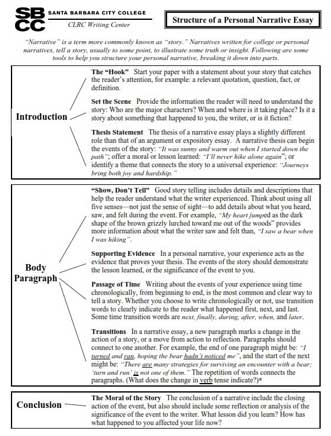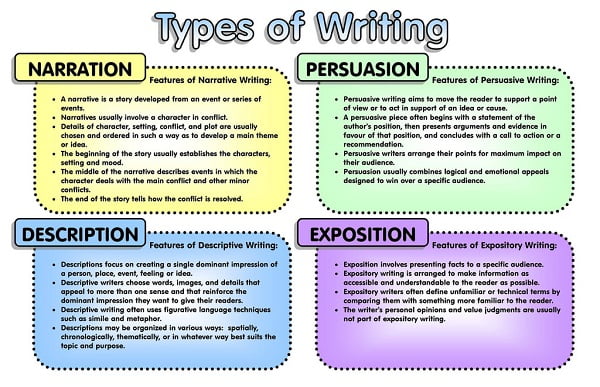
Describe events chronologically. As a rule, such papers are created in proper chronological order in order to avoid confusion and allow everyone who reads it to follow the author’s thoughts easily and with interest.
Highlight the most crucial moments. Keep in mind that you will have to highlight the most significant arguments or facts to help your readers identify them and easily understand their role in the story, as well as their influence on the outcome.
Do not give details that don’t mean anything to your story. They make your essay too wordy and can confuse readers. To determine whether specific details are needed, find out if they have significant roles in the plot.
Double-check the provided requirements. When you get such an assignment, you should be provided with some guidelines and requirements. If not, you can always request more details from your instructors.
Guidelines For Writing A Narrative Essay
Start with the draft. It is not easy to write a good story from the beginning to the end without some planning. That is why you should create a narrative essay outline and draft and then polish it until you are sure that the result meets all the requirements. This method is used by many people, including famous writers.
Revise your essay. Check it for grammar and plagiarism, rewrite sentences that don’t sound well, and don’t hesitate to ask for advice from your friends, there are also many services that can help you with revising and editing your narrative essay.
Proving and supporting. You should not only show your opinion but also give arguments that support it. You can provide readers with any facts and references that showcase your thoughts and the results of your conclusions.
If you are assigned to work on writing a narrative paper in college or high school, it is a good opportunity to train your skills in storytelling and show your knowledge and understanding of a subject. For many students, these essays are much more exciting than other written works. You demonstrate a specific event or episode and its results from your point of view, as a story, which helps you and your readers be more involved in the process than usual.

In order to make the starting and the entire essay impactful and catchy, use a hook to take a grip on your reader’s interest. A hook is an amusing opening line of your essay, written in different forms to make your introduction intriguing.
It is the first line that defines that either the reader will remain glued till the end or not. If the beginning of your narrative essay is interesting and appealing, the readers will surely enjoy reading your essay.
- Introduction - An introduction of a narrative essay contains a hook statement, which is used as an attention grabber. The purpose of an introduction is to make your audience familiar with the topic.
- Thesis Statement - Apart from the hook, an introduction carries a thesis statement that comes in the last lines of an introductory paragraph. A thesis statement is a narrative essay that presents the main story or confession of the writer.
- Body - The body of a narrative essay includes the incidents, experiences, lessons, logical statements, etc that revolve around the thesis statement leading up to a conclusion. The body of the essay is written in paragraphs in which every paragraph has a new idea to introduce but the transition is maintained.
- Conclusion - A conclusion of a narrative essay summarizes the whole essay highlighting the main idea of the essay and present that the argument and statement made in the introduction are proved.
To do your narrative writing correctly and effectively follow the steps below:
How to Write a Narrative Essay

As the narrative essay includes characters and a story, students often confuse it with short stories.
A narrative essay, unlike other essay writing, provides a chance for the writers to present themselves. Though they are written in accordance with your personal experiences and stories, students find it hard to write.
For your ease and making the essay effective, draft an outline. The outline will provide you a guide on what are the important things that should go in your essay and what are the irrelevant information that needs to be discarded.

While writing your essay, you need to be driven by passion and utilize concrete details. Narrative writing offers students a great opportunity to score highly by telling a good story with passion, without having to concentrate on areas like persuasive writing and literary analysis.
When it comes to the question of ‘‘how to start a narrative essay’’, the introduction starts with a hook (a leading statement about the story that grabs the attention of the reader). Then you continue with setting the scene: when did the event occur? Where? Under what circumstances? Having the ability to answer these questions will enable the reader to dig deep into the story and will be fascinated by it until the end. The introduction ends with a thesis statement that lets the reader know the truths or insightful experience stemming from your story.
During the process of narrative writing, it’s essential to list any sounds, feelings, tastes that the writer experienced in the story. The writer ought to draw the reader while refraining from making the narrative story sound like another summary. Make use of transitional words in order to make the flow and easy to perceive.
The main story develops in this section. It generally contains three paragraphs. The first one involves the engaging action (a catalyst of the event talked about in the reflective essay). Moreover, the second paragraph concentrates on the middle stage (the advancement of the story and hints to its significance). Finally, the third one describes the end action (what has been done to arrive at a resolution and the lessons learned from that experience).
Key Elements of Good Narrative Essay Examples
- You begin from the introduction, which is supposed to be captivating to capture the reader’s attention.
- Next, you outline your plot in the body.
- Finally, you come up with a conclusion, explaining the lessons learned from that experience and how it can be useful to others.
The format of a narrative essay is almost similar to a general essay format:
- Narrative writing guidelines recommend beginning your narrative essay examples with an interesting quote, fact or even a question. Your readers will be intrigued and thus have the urge to read the rest of your story.
- Refrain from long-winded sentences in your introductory paragraph.
- With this kind of essay, you are supposed to write from your own viewpoint. Therefore, make use of suitable words that will express your mindset.
- Narrative essay examples are written in the first person narrative – follow this for your essay too.

Now, let us give you a few more tips on how to write a flawless narrative story:
The opening clause of your story has to accomplish 3 goals:
Here are the basic characteristics that define this type of writing:
The main purpose of the narrative style of writing is to tell a compelling story. It doesn’t sound like too big of a deal, right? You couldn’t be more wrong. Even if it might seem easy at first sight, telling an engaging story can be rather challenging. To help you overcome this challenge, our writers have compiled a comprehensive guide on how to write a narrative essay step by step.
Do’s
To make the writing process less stressful, keep the following do’s and don’ts in mind:
A narrative essay is a form of academic writing that aims to tell a story. As the author, your goal is to create the right atmosphere and a lifelike experience for your readers.
- A Conflict/Challenge: An inciting incident that creates the tone and sets the story in motion.
- A Protagonist: A relatable character that faces a conflict or challenge against overwhelming odds.
- Change or Growth: Overcoming the conflict or challenge sparks some change in the protagonist. A realization may have sparked this change. This realization can also be an after-effect of the character’s development throughout the story.
- Keep It Clear. Your narrative writing should be easy to read and understand. Thus, try to avoid phrasing and syntax that is too complex. Keep your language clear and simple.
- Don’t Overuse Details. A narrative essay should tell a story in vivid detail. However, it is important not to overuse details as well. As was already mentioned, your word count is going to be limited and you still need to have enough space to let your story unfold fully. Thus, don’t describe literally everything and focus on things that matter and add value.
- Use the First-Person Narrative. As a rule, narrative writing aims to describe real events and experiences that happened in the author’s life. That’s why you should avoid writing in the second-person perspective.
- Use Dynamic Words. A narrative story should be engaging and dynamic. Avoid making it too monotonous and don’t overuse passive voice.
- Limit References. Most papers written in MLA format have to include in-text citations and thus, lots of references. This is, however, not a good practice for a narrative essay. By its essence, this type of assignment is much more personal, so it would be great if you can use your own thoughts and feelings to write it. If you still used some other helpful resources while writing, cite them on a “Works Cited” page.
Below is narrative outline template that reveals the structure and key elements required in a narrative essay. Use it as an example or checklist while working on your outline.
Introductory background – introduction would also typically contain additional information that helps take readers into the author’s world and help them visualize, imagine, or recreate narrated facts. This could be information about this story’s relevance for you or for everybody else. For instance, it could be mentioning that this story is about your first encounter with a negative manifestation of human nature and describing how shocking this was for you as a child, adolescent, young adult.
- Choose an interesting topic and an aspect of it that is really worth addressing. For instance, your general topic could be friendship and you could specifically focus on betrayal, various types of friendship, what makes friendship last for years. If it is personal narrative outline, be sure to pick proper personal narrative topics that interest you, about which you feel you have something valuable to say.
- Write short – narrative is not a novel, while an outline should be even shorter. An outline has to be helpful guide that allows to quickly overview your narrative’s skeleton, all content to be covered and its relative order, to see all ramifications of each major point, situation, etc. It could only serve such purpose if it is concise.
- Make it as detailed and comprehensive as possible. List everything you intend to cover – you might even write keywords below each point of the outline to designate other minor pieces of information that need coverage. Avoid unstructured text.
- After listing all content elements, revise them and rearrange ideas, scenes, action episodes to enforce a logical flow and facilitate easy reading. Think ahead about which elements could be excluded if it happens that maximum text volume is exceeded and try writing these parts last – this may save you both time and effort.
- Mark in your outline which scenes would be described in greater detail. A plot may unfold with different speed and with different attention to detail. Thus, there could be scenes where much sensory information and many minor details are provided in order to depict the moment in vivid colors.
- hook. Opening scene: A person sitting next to me in a bus is talking loud about his atheist beliefs while I’m embarrassed other people can hear
- introductory background. I was in my 11th grade, still reflecting on belief in God, trying hard to compromise opposing views, and abstaining from picking a definite position.
- thesis. Sometimes, the humblest people may be an impactful examples that can force us to reconsider our attitudes.
Narrative Essay Outline Parts
Main body, as a part of narrative essay outline, should have such constituents:
- Restatement of thesis. Even if my interlocutor was an absolute stranger and not the most pleasant company, he was not afraid to follow his reasoning wherever it took him, without any imaginary self-imposed taboos.
- key lessons: one needs to always stay open-minded and think beyond self-imposed limits
Summary of key points – this conclusion section could briefly revisit described facts or situations, role of certain characters, conflict’s essence, it could list key moral judgements derived, lessons learned, attitude changes inflicted on the author or protagonist.


